Sure, you know what a soft box is, and you may already own one, but it’s helpful to take a step back and get a fresh look at the world’s favorite lighting accessory. Some facts will confirm your assumptions, and others may surprise you, but all the information will be helpful.
For example, have you ever seen the same subject photographed with five sizes of soft boxes? How about an explanation of why umbrellas may give you lens flare, while soft boxes will not?
Have you ever seen a soft box with removable sides? How about a comparison between modern soft box lighting and a studio photo taken in 1900?
How a Soft Box Works
Soft boxes work by confining the light from a lamp into a closed chamber and releasing it through at least one layer of diffusion material. As the light passes through the translucent fabric it scatters, producing a very even and soft result.
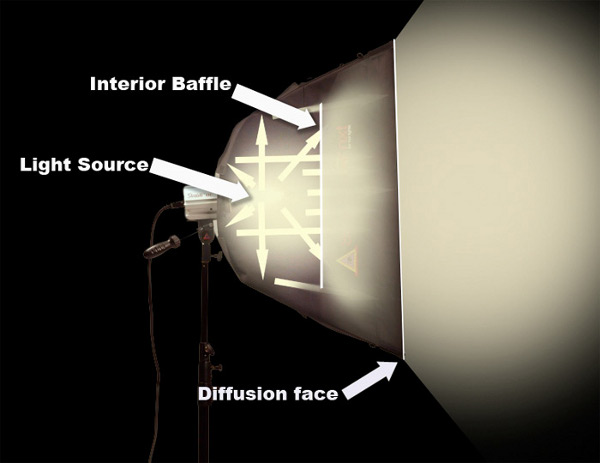
How Should I Use a Soft Box?
Uses for the soft box fall predominantly into two categories: Key Light, as the principle light source, and Fill Light, as a secondary light to reduce contrast. Although any style of light source can be used for key or fill applications, the use of a harsh light for fill renders a poor result. Soft boxes, on the other hand, are perfect for fill light because they don’t cast harsh shadows.
Below, we see a comparison between a direct flash (hard light) and a soft box being used as a fill light in bright sunlight. In both flash fill shots, the flash is just above the camera, as it would be for most handheld camera shooting at events. The sun is almost directly overhead, which is one of the worst possible natural lighting situations. The direct flash creates an unattractive shadow under the chin, and models the skin poorly. Notice how the medium LiteDome provides a natural fill light that minimizes the harsh conditions and hides the texture around the eyes that often accompanies bright outdoor lighting.
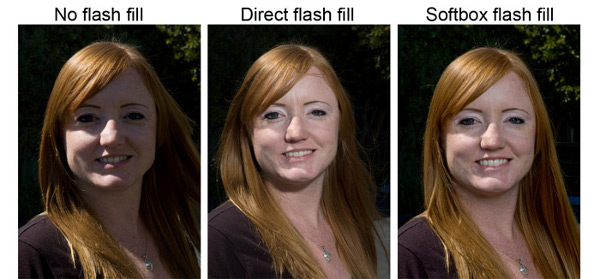
Next, we see a comparison between a direct flash (hard light) and a soft box being used as a key light in bright sunlight. As before, the flash fill is just above the camera lens. In this series we’ve moved the model so the sun is behind her, careful to keep any direct light from striking her face. In this series, the subject’s skin is modeled in a more attractive way with soft light. In fact, the shot with the soft box flash fill looks as if no artificial lighting has been used at all.
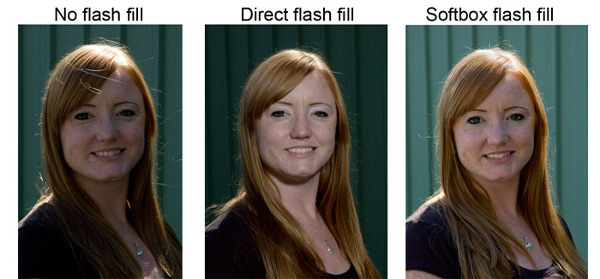
Why do Photographers use Soft Boxes?
Most every professional photographer uses soft boxes. But why? The answer is adaptability. There’s nothing like a soft box when it comes to providing soft light for any style of shooting. Fashion, food, product, portraiture, you name it. Even when they aren’t used as the key light source, soft boxes play an important role for fill, separation and edge lighting. It’s difficult to imagine photography without them. Read on to learn more about what makes the soft box so essential.
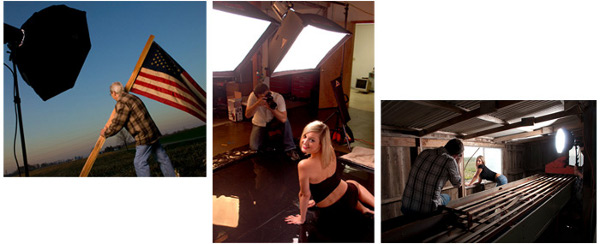
What is a Soft Box?
A soft box is a term that describes an enclosure that surrounds a light source on all sides and diffuses the light that escapes from it. Early soft boxes were large plywood boxes with an open front and tracks along the top and bottom where various diffusion flats could be slid into place. Today, soft boxes are built of lightweight materials, come in all sizes, and are very portable.
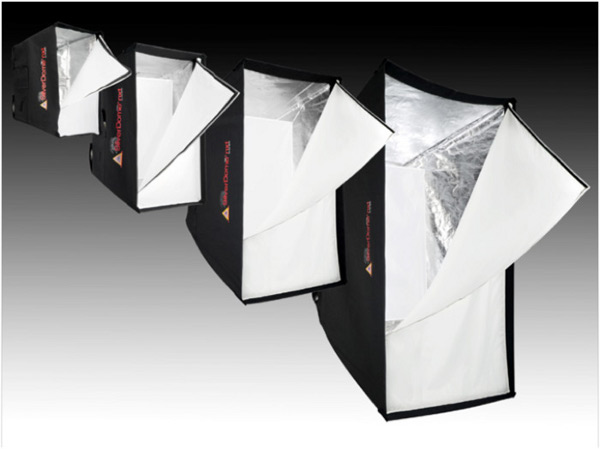
What Size is Best?
The various sizes of soft boxes, and the various distances at which they can be effective, adds up to a lot of possible combinations and choices. In the series of photos below, we see how different sizes of soft boxes affect the same subject. Note that the soft box is very close to the subject in all the shots. This helps us to see the differences in performance between the various sizes.
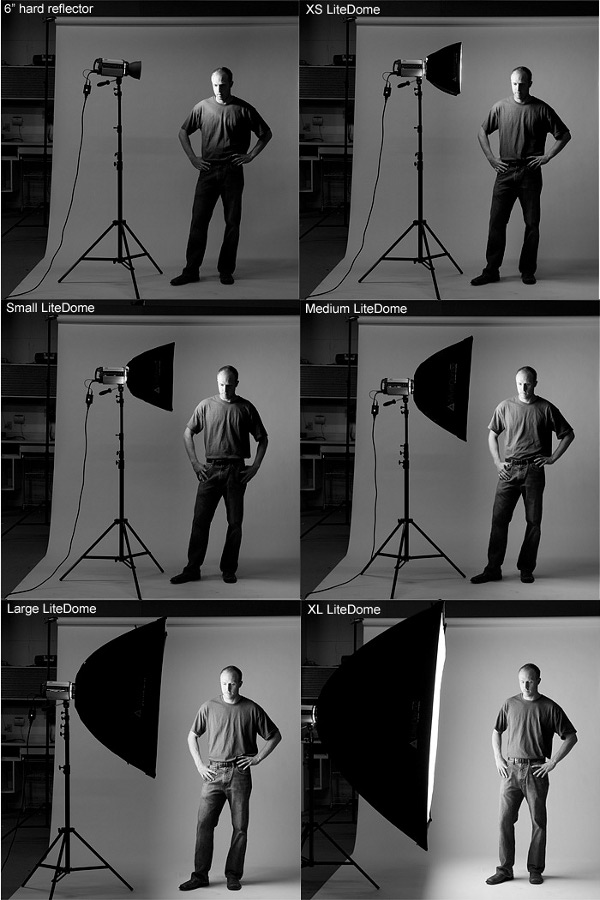
What can we learn from these photos? The larger the light source, in relation to the subject, the softer the light becomes. Soft light reduces contrast, conceals skin blemishes, and softens the edges of the shadows. Another important distinction between small and large soft boxes is the way that large soft boxes cover the entire subject with light. This overall coverage is an essential feature for full-length portraiture or wedding photography.
If you’ve ever asked yourself, “Which soft box should I buy?”, the series of photos in figure 6 will help you decide. If you’re like me, you’ll see the benefit of having a very small one, a very big one, and one in the middle.
Various sizes of soft boxes produce a range of different results for product photography too. To illustrate how the size and quality of the reflection varies while photographing a wine bottle, we set up a simple test using 5 different sized soft boxes.
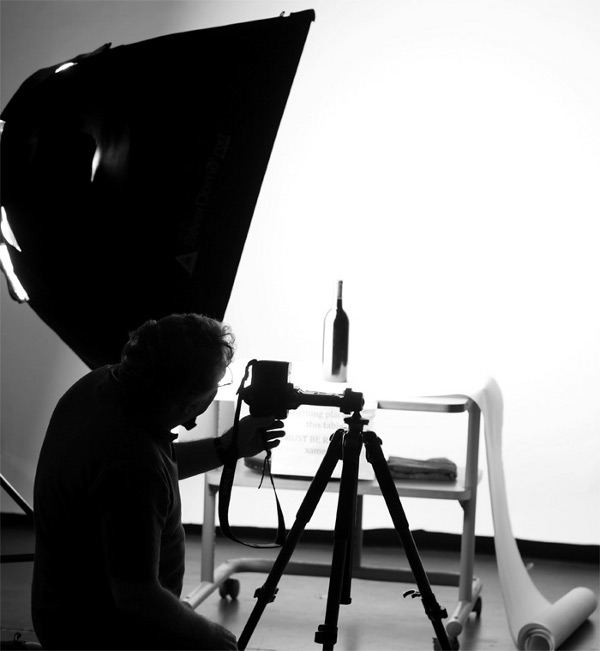
The comparison shots below show how the size of the highlight on the surface of the glass varies with the size of the soft box. This is an expected result, but closer inspection of the shots also reveals that the quality of the light is softer with larger light sources. The large soft box renders the glass as an object with a smoother surface, which reads as higher quality. The highlight on the side of the bottle and the neck almost join, conveying more information to the viewer about the shape of the bottle.
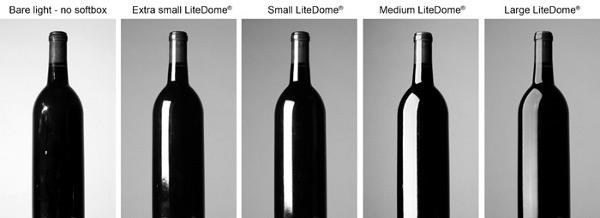
Choosing lighting styles is largely a matter of personal preference, so any size soft box can be used for product and still life photography. Most photographers who specialize in still life and product work have small, medium and large soft boxes, in addition to many sizes of reflectors.
Reminder: The closer a light source is to the subject, the softer the light and the larger the resulting reflection. However, larger soft boxes allow you to maintain a high quality transparent reflection if you desire, as demonstrated by the example on the far right.
What is the Best Shape for a Soft Box?
Most commonly, there are square, rectangular and octagonal soft boxes (close to circular). Although quite subtle, each shape has its own characteristics. The OctoDome soft box, available in four sizes, has taken the umbrella shape and incorporated several aspects to improve upon its efficiency and usefulness.
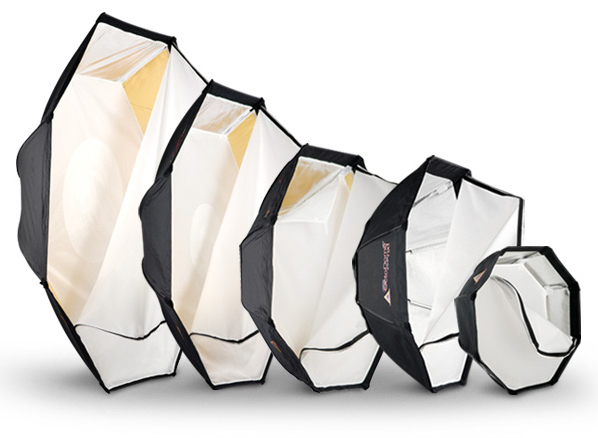
The OctoDome soft boxes are favored by fashion and portrait shooters for their ability to provide very soft output in a relatively shallow profile design. OctoDome soft boxes produce light that “falls off” very quickly as it gets further from the source, so backgrounds can remain less affected than if they were lit by an umbrella. Below, we see a full-length bridal shot with a fully illuminated subject, yet the light striking the brick path is not too bright, and there are no harsh shadows to distract the viewer.
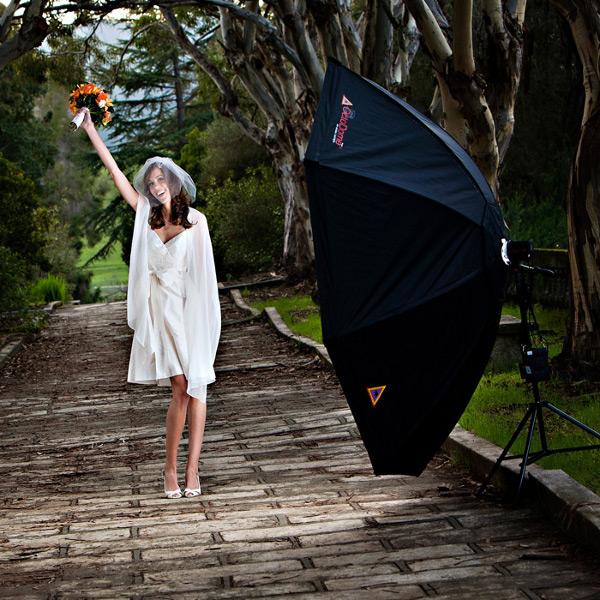
In the close-up of this same bride below, the light is extremely soft and creates no shadows from the veil onto her face. The highlights in the bride’s eyes are large soft octagons, the preferred shape for fashion.
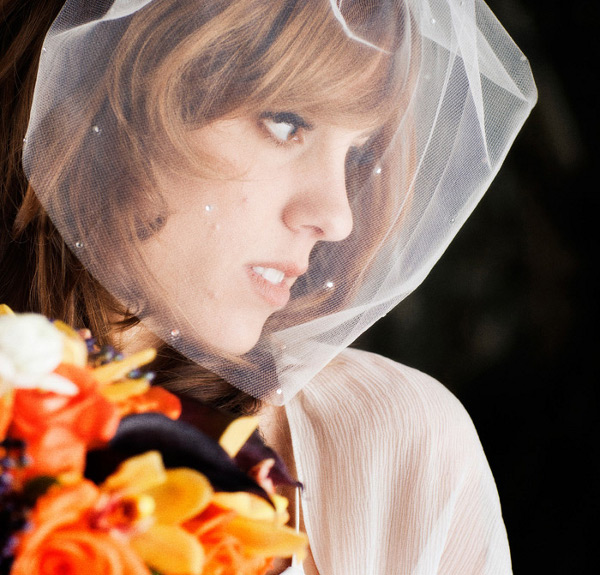
Excellent results are also achieved with smaller octagon-shaped soft boxes. The extra small OctoDome is a favorite for portrait, event and editorial photographers because it delivers a similar effect when used close to the subject, and a more defined effect when used further away. In both cases, the light is soft and produces attractive results, which are superior to open flash for most subjects.
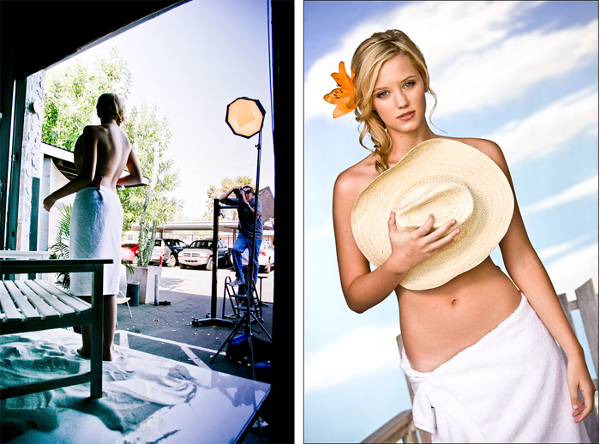
Another interesting variation of the standard soft box is the WhiteDome, which has removable sides so that light can be sent in multiple directions.
Videographers and architectural photographers find the ability to get a directional or an omni-directional output from a single soft box very useful.
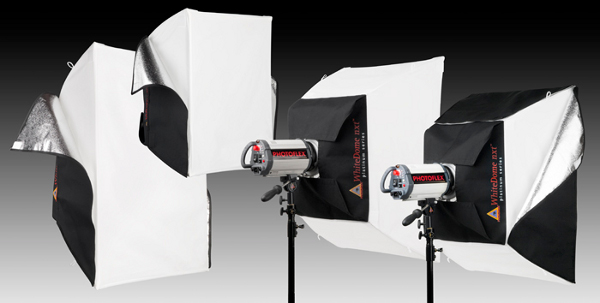
Here, you can see two WhiteDomes on booms to light a kitchen scene. The omnidirectional nature of the WhiteDome is perfect for boosting the overall light level, but maintaining the natural lighting look of the location.
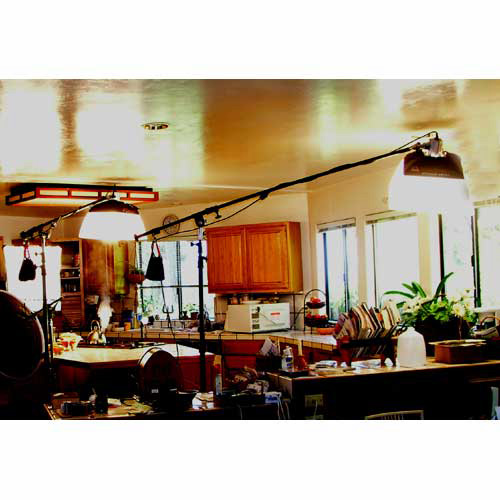
When were Soft Boxes Invented?
Although motion picture lighting directors have been using diffusion flats placed over fixtures to achieve soft lighting effects since 1915, the fully enclosed portable production soft box didn’t appear until 1985 when Photoflex CEO Gene Kester applied the principles of dome tent construction to what became the “LiteDome”. Suddenly, photographers had a way to control light in a new way.
Where can Soft Boxes be Used?
Just about anywhere. One of the best uses for the soft box, square soft boxes in particular, is to mimic the soft light from a north-facing window. Early photographers realized the beauty of north light and virtually every photo studio from 1850 through 1930 had a room with a large window for shooting portraits. In figure 14 we compare a modern photo taken with an extra large LiteDome to a window light portrait taken in 1900. The similarities of the lighting quality are unmistakable.
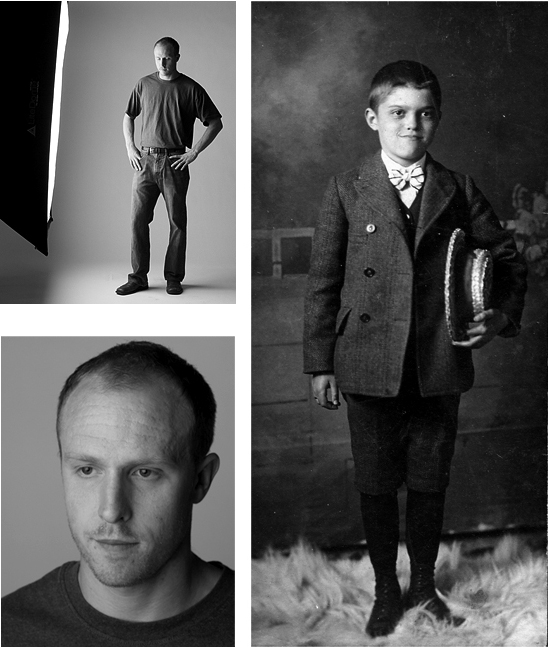
Because soft boxes are easy to disassemble and transport, photographers can produce beautiful north light anywhere they want. That’s why soft boxes are used in the studio and on location for all types of still photography, film based motion picture and video images. This widespread use has made the soft box the most popular lighting modifier in the world.
Soft Boxes vs. Umbrellas
This really shouldn’t be a ”one or the other” question. I’ve been teaching photography for 30 years and I always get asked, “Should I buy an umbrella or a soft box?” I own a selection of both umbrellas and soft boxes because I do a wide variety of shooting, so my answer is that you’ll want to own both.
Umbrellas do a good job, but they only do one job, while soft boxes have many different designs to achieve a variety of distinctive results. For example Photoflex soft boxes accept grids to achieve a narrow beam, while retaining the same soft light quality. This feature allows photographers to use soft boxes for hair and separation lighting without getting lens flare or spilling stray light onto the background.
In this image, note how the background remains dark, even though the soft box is actually touching it. You can see how a soft box with a Grid can be used in a position above and behind the subject where an umbrella would not work.
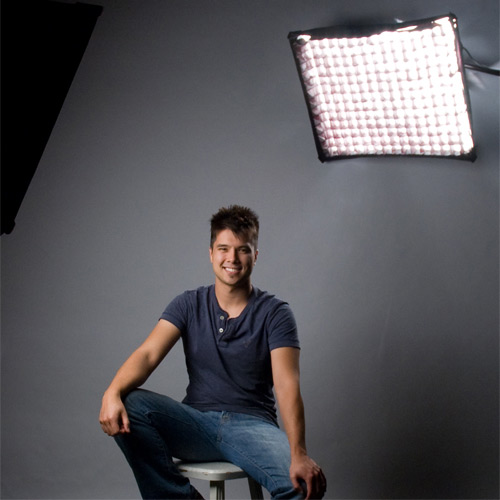
Soft boxes are also preferable to umbrellas for certain angles with front lighting. Below, we see an umbrella placed forward of the camera position and used to achieve a 45-degree key (Rembrandt) lighting pattern on the subject. Light from the lamp is getting around the umbrella and striking the lens directly, causing a series of green flares to appear in the image. This setup is probably one of the most common situations in all of portrait photography and it’s easy to see why soft boxes replaced umbrellas in most professional studios.
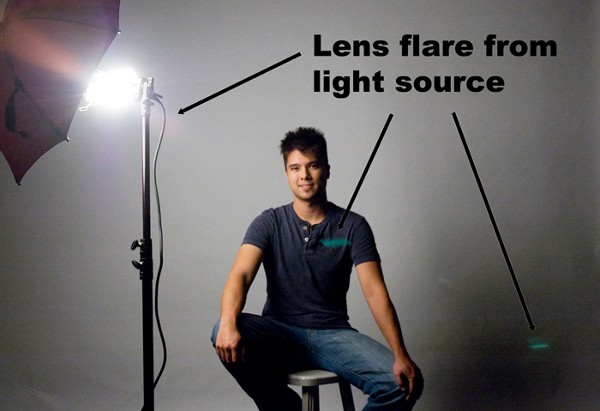
In figure 18, we’ve recreated the same setup using a soft box. The lens flare has been avoided because the lamp is fully enclosed in the soft box, protecting the camera from stray light.
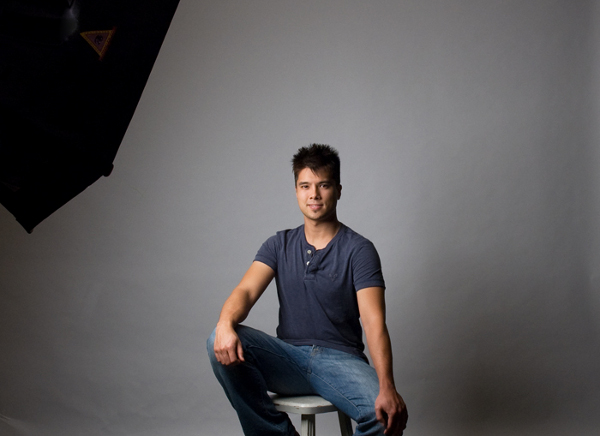
The simple explanation for this problem is that when the umbrella is forward of the camera, the light source is facing toward the lens. A larger umbrella can help avoid the problem, but placement will be restricted because the larger umbrella will encroach on the field of view. The full range of light pattern options will therefore be limited, as shown below, whereas the soft box does not pose a problem from flare, no matter where it’s placed.
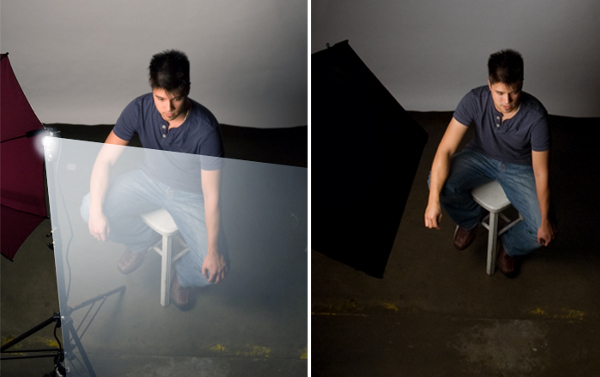
When Should I Use a Soft Box?
Anytime soft lighting will produce a better image than hard lighting. The examples are too numerous to mention, but they include portraiture, wedding formals, product photography, editorial shooting, and just about any other situation with human subjects.
In the images below, we see soft boxes with Grids combined with a large OctoDome to achieve a striking lighting result for a shot at dusk.
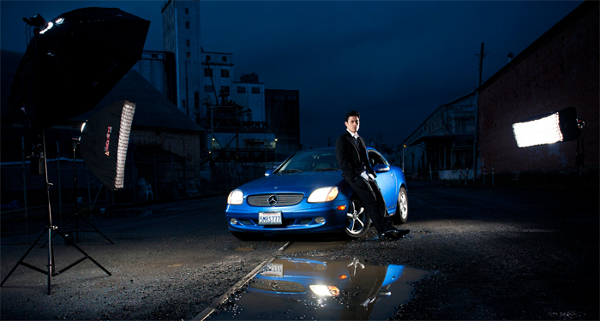
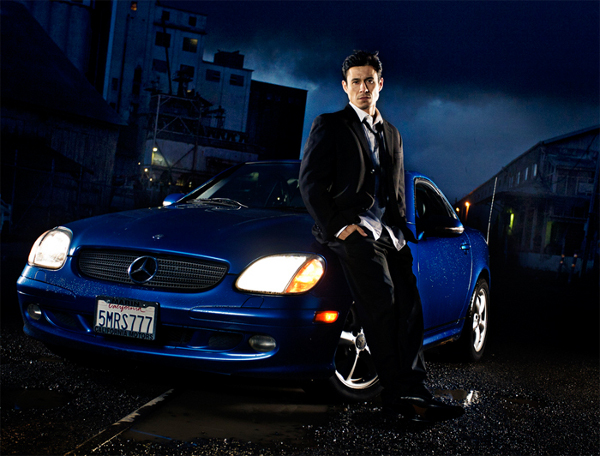
When Should I Invest in a Soft Box?
If you don’t own a soft box now, it’s time to acquire at least one to get started. Begin with a medium size, like the 24” x 32” LiteDome. It will satisfy most of your needs as you become familiar with its benefits. After using it for a while, you’ll probably want to get a larger or smaller size, depending upon your subject matter.
I hope this short primer has explained what soft boxes do and how they can help you improve your photography.
Written by Jeffery Luhn, contributing instructor for PhotoflexLightingSchool.com
Image examples by Jeffery Luhn, Ben Clay, Michael Corsentino, and Paul Markow
Photoflex Lighting School offers many more informative lighting tutorials just like this one. For more, visit the Lighting School and start your journey to professional lighting!
| PHOTONews on Facebook | PHOTONews on Twitter |







